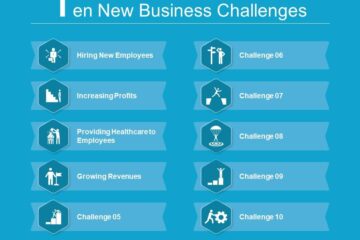 Rose Marcario, CEO of outdoor clothing company Patagonia, believes providing employees with high quality on-site child care isn’t just is good for families – it’s good for the bottom line.
Rose Marcario, CEO of outdoor clothing company Patagonia, believes providing employees with high quality on-site child care isn’t just is good for families – it’s good for the bottom line.
“It’s true, there are financial costs to offering onsite child care, and they can be expensive if you offer high-quality programs or subsidize your employees’ tuition when onsite care is not available,” Marcario writes ina Fast Company article adapted from Patagonia’s?new book, “Family Business: Innovative On-Site Child Care Since 1983.”
“But the benefits – financial and otherwise – pay for themselves every year,” she continues.
In 1983, Patagonia become one of the first companies in America to launch a corporate-sponsored on-site child development center at its headquarters in Ventura, California. The company has since opened another child development center that serves its 400-employee distribution center in Reno, Nevada.
Over the years, the company has tracked a few quantifiable benefits, which Marcario outlines:
Costs recouped thanks to taxes: 50%
According to Marcario, the federal government grants a qualified child-care program like Patagonia’s a yearly tax credit of $150,000 and additionally allows a company to deduct 35% of its unrecovered costs from the amount of tax that would be taken. Marcario does the math:
“To date, costs after revenues (tuition fees) for running Patagonia’s child development center are approximately $1 million. With a yearly tax deduction of $150,000 and a second deduction of 35% of costs (35% of $1 million = $350,000), that’s a total of $500,000 in costs recouped, or 50%.”
Costs recouped thanks to employee retention: 30%
Marcario points out that the cost of losing an employee and training a replacement can range from 35% of a non-managerial employee’s annual salary to 125% of salary for a manager (not to mention a couple of years’ pay to replace a senior exec.)

Thanks to the company’s kid-friendly programs, Marcario says Patagonia has seen all of its moms return to work after maternity leave over the past five years, and the company’s turnover rate for parents who have children in the program has run 25% less than for its general employee population.
Costs recouped thanks to employee engagement: 11%
By estimating the effect of on-site child care on participating parents’ engagement and multiplying that by the estimated effect of parents’ engagement on the company’s financial performance, Marcario says the benefit has positively impacted customer satisfaction and business performance.
And thanks to certain intangible benefits the company has seen like an equally balanced workforce and upper management in terms of gender, greater employee loyalty, and a stronger workplace culture, Marcario says she wouldn’t be surprised if the overall return on investment of providing on-site child care was closer to 115% or 125%.
“Even in times of economic struggle the program was never cut, because [our founders] believed in providing a supportive work environment for working families,” Marcario writes. “Taking care of our tribe is part of our culture and our commitment to helping our own people live the way they want.”
According to Marcario, this commitment has paid off – she believes such programs help earn the trust of employees, who give their time more wholeheartedly, and the loyalty of customers, who prefer to buy from a brand with a better reputation.
“I’ve been fortunate to see these benefits firsthand, and I strongly believe the business community should feel confident in taking the leap and adopting onsite child-care and other policies that support working families -not just because it’s the right thing to do, but because your business will find greater financial success, too,” Marcario writes on LinkedIn.
Patagonia’s report come at a crucial time for many American families, especially for those who will be casting their votes in this year’s Presidential election. At a time when a quarter of American families admit going into debt to cover the costs of child care, both Hillary Clinton and Donald Trump have added child care proposals to their platforms this summer.
And the private sector is slowly taking note. A few major employers like Google and Cisco offer on-site child care, and, unsurprisingly, they also top Business Insider’s list of the best companies to work for in America.
“As a CEO, [providing high quality on-site child care] is not even a question in my mind. Business leaders (and their chief financial officers) should take note,” Marcario writes.’
[Source: Business Insider]




